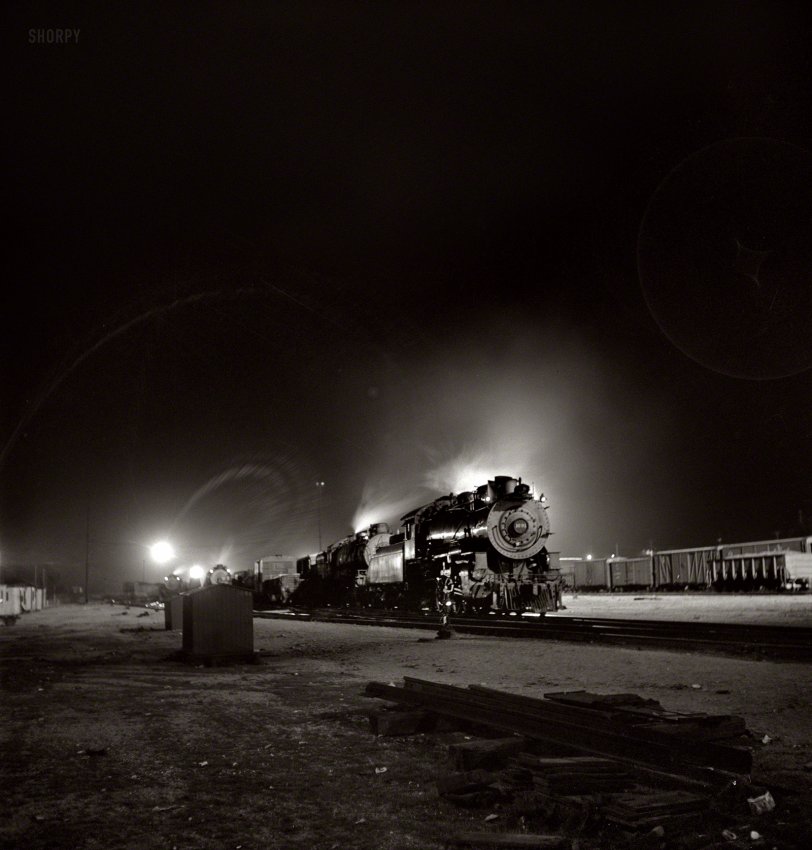


Framed or unframed, desk size to sofa size, printed by us in Arizona and Alabama since 2007. Explore now.
Shorpy is funded by you. Patreon contributors get an ad-free experience.
Learn more.

- Freeze Frame
- Texas Flyer wanted
- Just a Year Too Soon
- WWII -- Replacing men with women at the railroad crossing.
- Yes, Icing
- You kids drive me nuts!
- NOT An Easy Job
- I wonder
- Just add window boxes
- Icing Platform?
- Indiana Harbor Belt abides
- Freezing haze
- Corrections (for those who care)
- C&NW at Nelson
- Fallen Flags
- A dangerous job made worse
- Water Stop
- Passenger trains have right of way over freights?
- Coal
- Never ceases to amaze me.
- Still chuggin' (in model form)
- Great shot
- Westerly Breeze
- For the men, a trapeze
- Tickled
- Sense of loneliness ...
- 2 cents
- Charm City
- What an Outrage
- Brighton Park
Print Emporium
Night Train: 1943

March 1943. "Barstow, California. A view of the Atchison, Topeka & Santa Fe yard at night." Medium-format negative by Jack Delano. View full size.
Whale, not slope
That type of tender was known on the Santa Fe as a whaleback. Slopeback tenders were typically used with switch engines not road power - though, as always, there were exceptions. The biggest problems Santa Fe had with the 2-10-10-2s were with their jointed boilers.
That Odd Tender
That slopeback tender behind the first loco was uniquely used on the Santa Fe, and was not original equipment on that particular engine. It came originally attached to one of the 2-10-10-2 mallets used to push trains over Cajon Pass. Built early in the century, they were the world's largest locomotives in their day, yet proved so impractical and labor intensive that they were short lived, like most behemoth locomotives produced in that era. They were scrapped in the 1930's, and MAY have been (I don't have my Santa Fe books handy, so don't quote me on it) converted into two 2-10-0 types.
Engines died, but tenders, especially practical designs like the slopeback, lived on until the very end of steam.
Maybe We'll Steam Again
There's a group up at the University of Minnesota working with some 501c3 organization refitting a Baldwin to run on Biomass. They think they can get better emissions, efficiency, and power than diesel once they get it right. Even got themselves a website: http://www.csrail.org/.
It would be awfully neat if we could see these kinds of things again!
2-10-2 "Santa Fe Type"
The Santa Fe steam locomotive 1691 in the photo, is one of the earliest examples of a locomotive type which was named after the railroad. They descend from the 2-10-0 "Decapod" type, to which the Santa Fe added a one axle "trailing truck" under the cab in 1903, for better tracking on the steep and curvy Raton Pass grade in Colorado and New Mexico.
This begot one of the most popular wheel arrangements in America for heavy freight service.
























On Shorpy:
Today’s Top 5